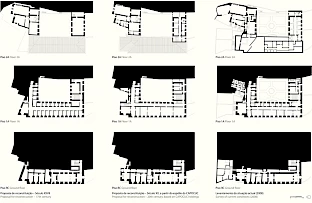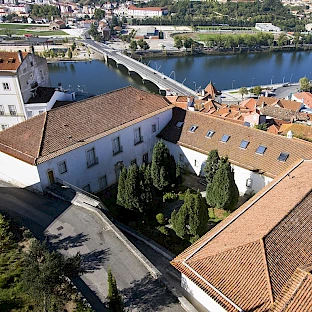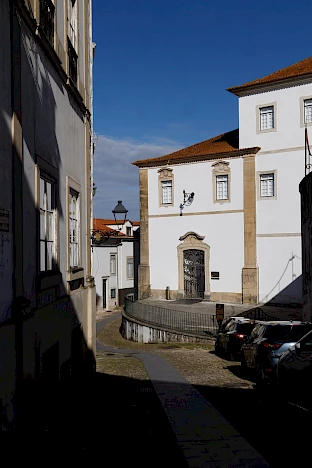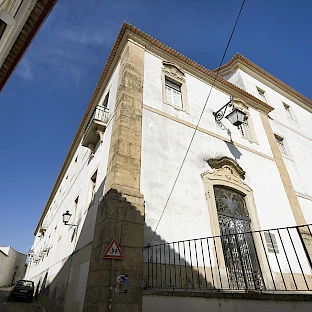Designation
Saint Rita's College
Current occupation
Transparency Authority
Propriedade
University of Coimbra

Art-historical characterisation
The Saint Rita’s College was founded in 1755 by the Discalced Hermits of St Augustine. It is organized around a courtyard, three storeys high. The residential areas were concentrated on the noble floor, on the west side of the building. Adjacent to the kitchen, located to the north and with a large chimney, the refectory took on a wide, rectangular configuration, with a pulpit on the east wall, a frequent element in the buildings of the Augustinian monks. The noblest entrance of the whole complex, facing south, gave direct access to the old chapel through an 18th century portal. Noteworthy is a grand interior staircase decorated with rococo tile panels. The building, which underwent some internal structural changes in the first half of the 19th century, when it was transformed into a private residence, was extensively modified in the 20th century, with the chapel transformed into a large reception room for the various academic services
After being remodeled in 2022, it now houses the Transparency Authority.
The university colleges
When the University was definitively established in Coimbra in 1537 by order of King João III, the city was endowed with a series of collegiate buildings designed to receive students. Essentially built by different religious orders and bishops, they were a mixture of convent and student residence, with dormitories, refectories, study rooms, cloisters and churches. The first seven buildings in Rua da Sofia were joined by many others in the upper part of the city, totaling 25 in the 18th century.
In 1834, as part of the ‘General Ecclesiastical Reform’, all convents, monasteries, colleges and religious houses of all religious orders were abolished and their assets incorporated into the National Treasury. Many were reused as military barracks, hospitals, railway stations, etc., others were sold at public auction and bought by private individuals. In all cases, the change in functions and uses was radical.








